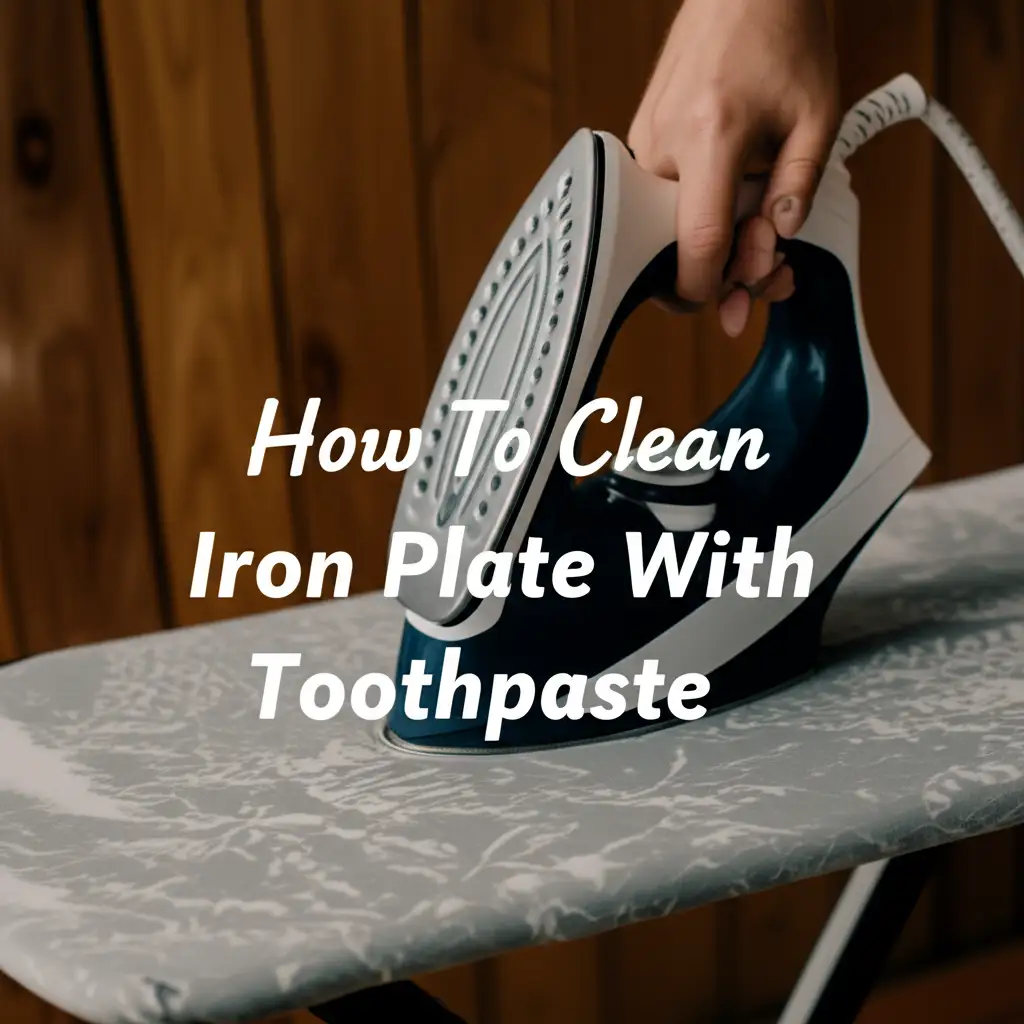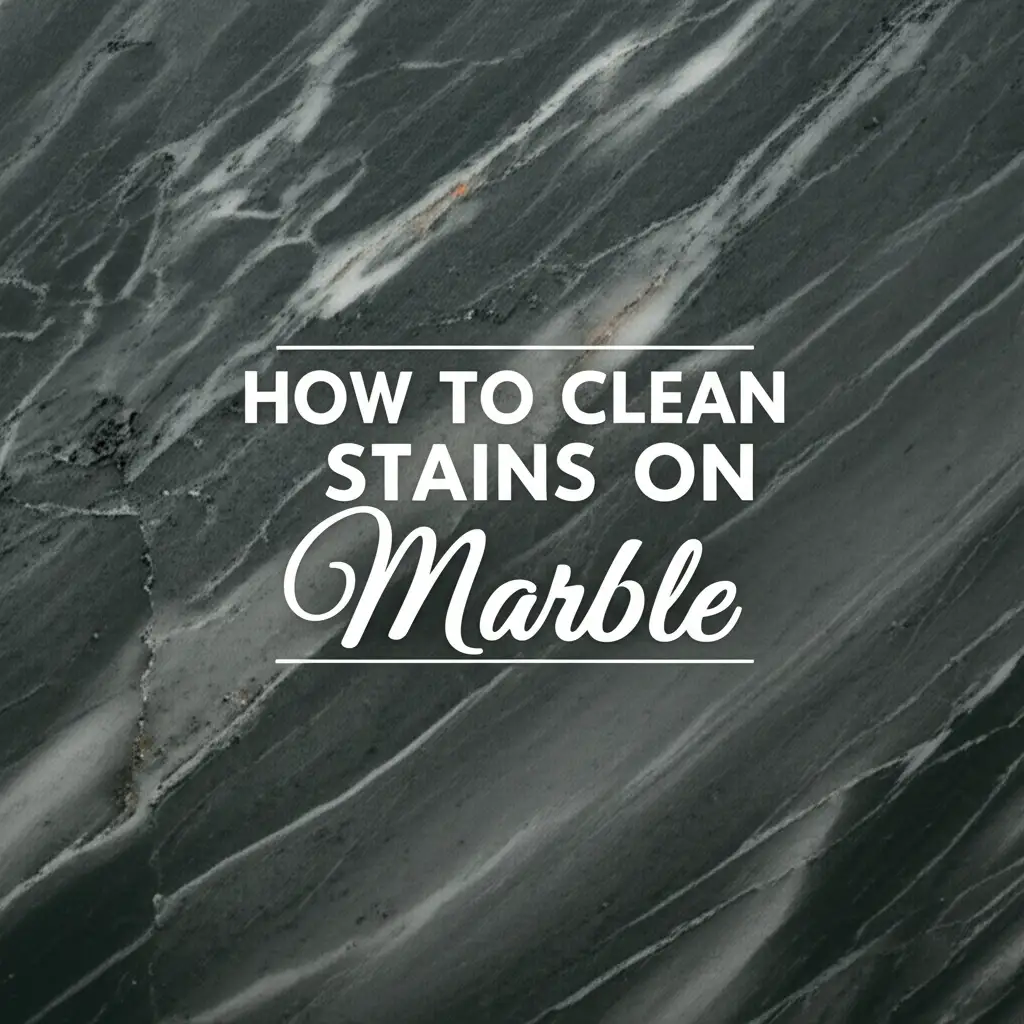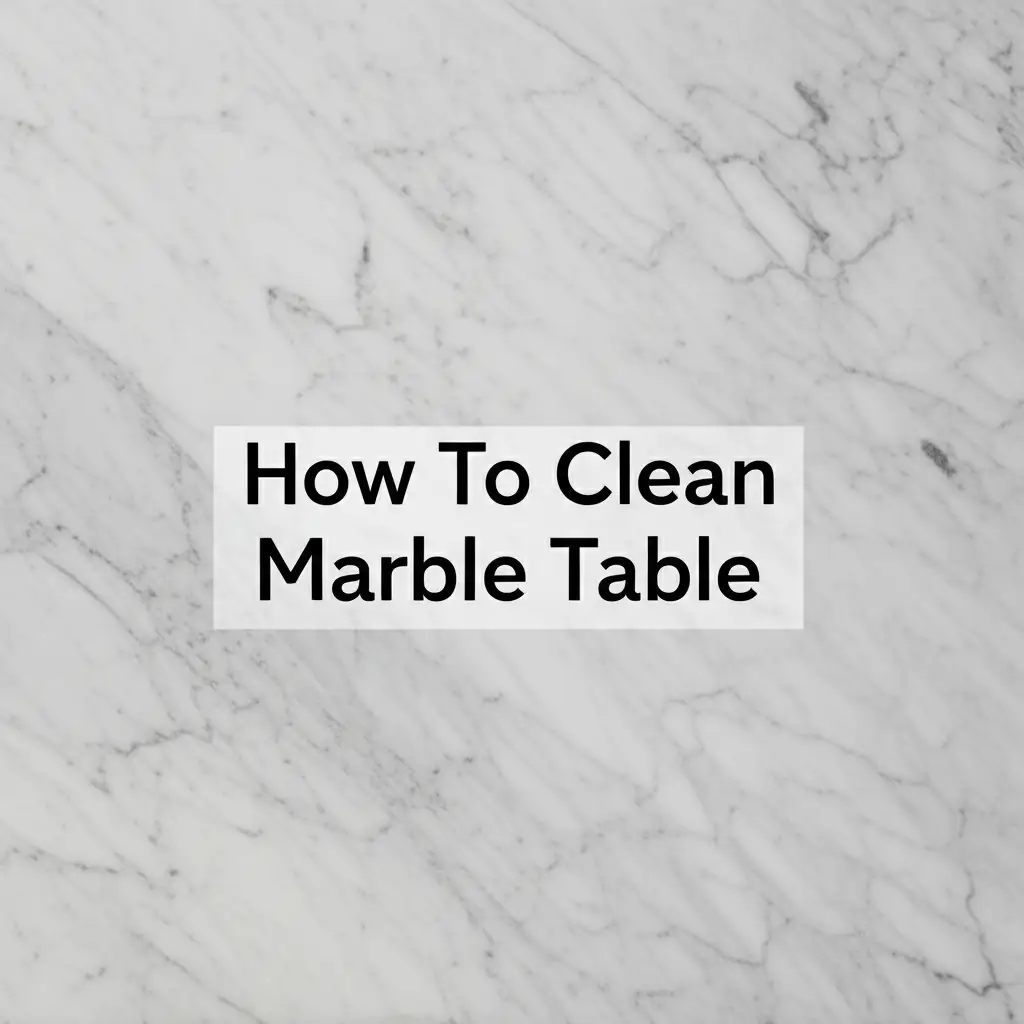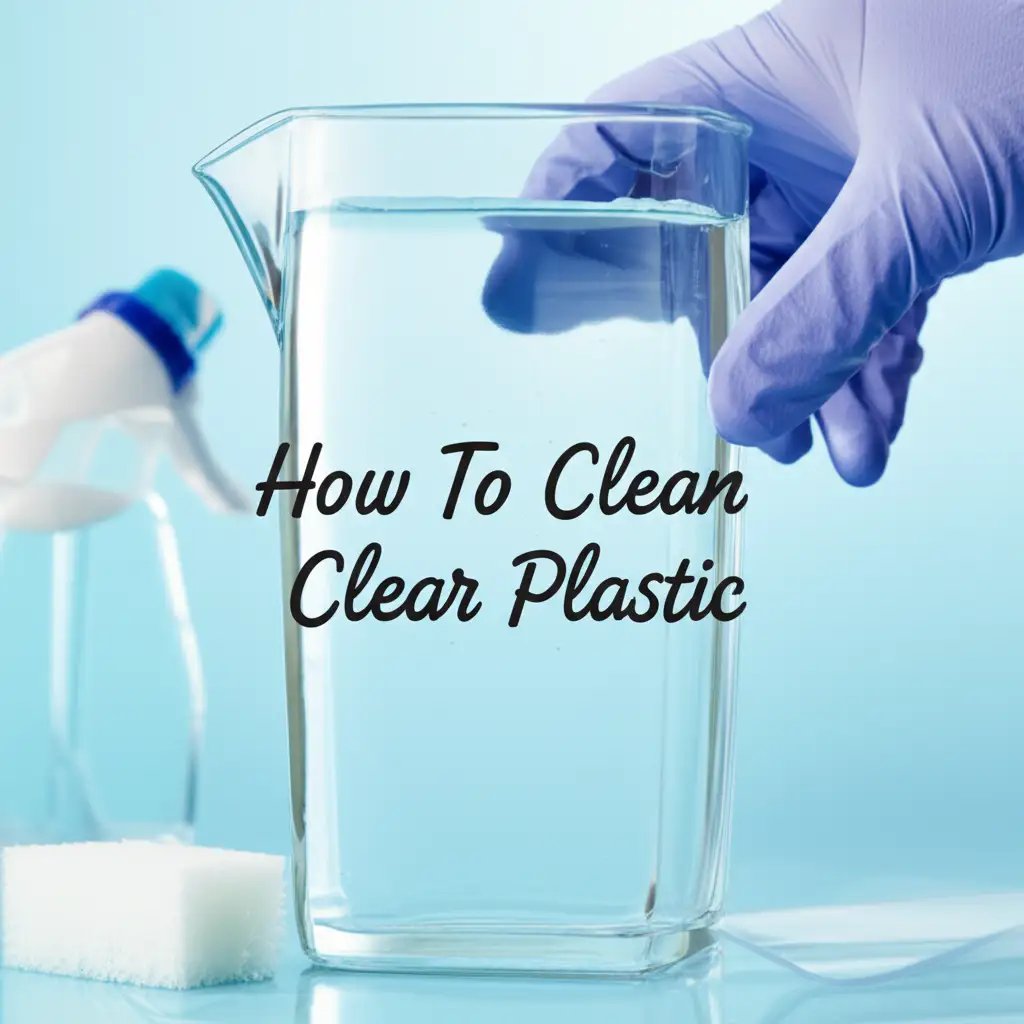· Home Care · 15 min read
How To Clean Clothes Iron
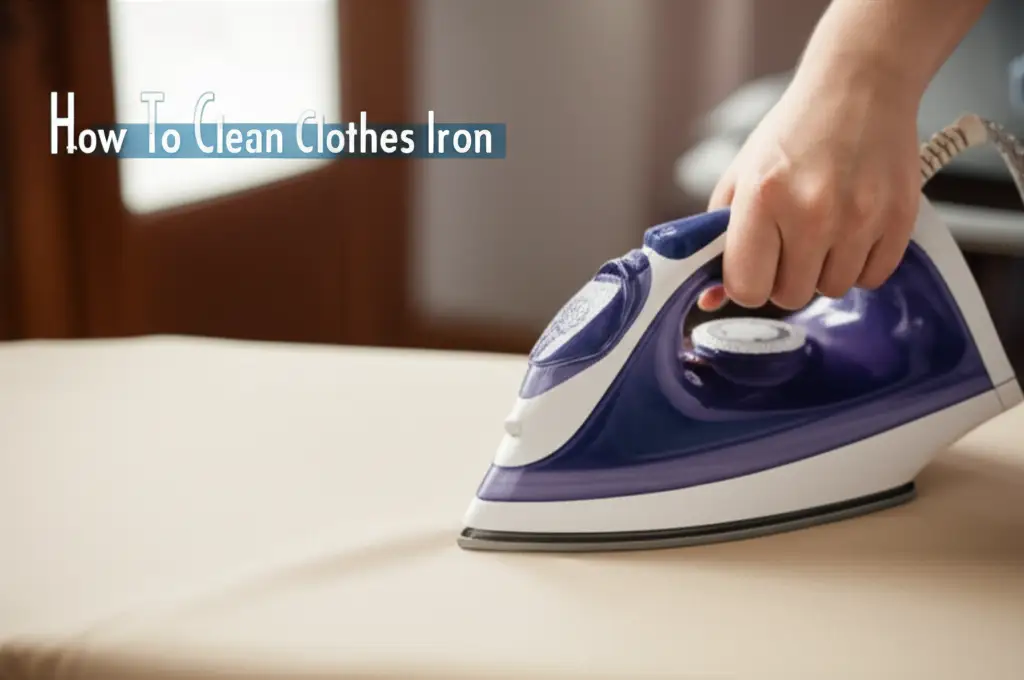
Restore Shine: How To Clean Clothes Iron Effectively
A well-maintained iron is a joy to use. Yet, over time, soleplates can accumulate sticky residue, burnt fabric, or mineral deposits. These imperfections transfer onto your clean clothes, creating new problems. Learning how to clean clothes iron properly ensures smooth gliding and extends its lifespan. It also keeps your garments pristine, avoiding unsightly marks or snags. This comprehensive guide will walk you through various methods to restore your iron’s performance and shine. We will cover simple home remedies and essential maintenance tips to keep your ironing tasks efficient and easy.
Takeaway
- Regular cleaning prevents buildup: Clean your iron’s soleplate and steam vents after every few uses.
- Choose the right method: Different stains require different cleaning approaches.
- Always work with a cool iron: Safety is crucial during the cleaning process.
- Test on a small area: Always test cleaning solutions on a hidden spot first.
- Distilled water is best for steam irons: It prevents mineral buildup inside the iron.
How do you effectively clean a clothes iron?
To effectively clean a clothes iron, you must first ensure it is cool and unplugged. Identify the type of residue on the soleplate. Then, use a suitable method, such as baking soda paste for general grime, salt for sticky spots, or vinegar for mineral deposits in steam vents. Always wipe thoroughly after cleaning.
Why Your Clothes Iron Needs Regular Cleaning
Your clothes iron is an essential tool for crisp, wrinkle-free garments. However, it often gets overlooked in regular cleaning routines. Dirt, starch, and fabric fibers build up on the soleplate over time. This sticky residue causes the iron to drag, not glide, across your clothes. It also leaves unsightly marks or even damages delicate fabrics.
Mineral deposits from tap water clog the steam vents in steam irons. These blockages reduce steam output, making ironing less effective. Limescale can even spit out onto your clothes, creating new stains. A dirty iron wastes your time and energy. It forces you to re-iron items or deal with stubborn stains. Regular cleaning ensures your iron performs at its best. It protects your clothing investments and simplifies the chore of ironing.
Essential Tools and Safety First for Iron Cleaning
Before you begin to clean clothes iron, gather the necessary tools. You will need a soft cloth or towel, baking soda, white vinegar, salt, cotton swabs, and possibly toothpaste. Some methods might require a dryer sheet or a non-abrasive scrubber. Ensure you have all items ready before you start the cleaning process. This preparation makes the cleaning job much smoother.
Safety must be your top priority. Always ensure your iron is completely cool before touching the soleplate. An unplugged iron prevents accidental burns or electrical shocks. Never submerge your iron in water unless the manufacturer specifically allows it. This could damage internal components and create an electrical hazard. Work in a well-ventilated area, especially when using vinegar, as its fumes can be strong. Protecting your hands with gloves is also a good idea. Take your time and proceed with caution for a safe and effective cleaning experience.
Tackling Sticky Residue and Burnt Fabric on the Soleplate
Sticky residue and burnt fabric are common culprits that hinder an iron’s performance. These can come from melting synthetic fabrics, excess starch, or fabric softeners. Ignoring these issues means transferring them to other garments. Fortunately, several simple and effective methods exist to clean clothes iron soleplates. My favorite method often involves common household items.
Baking Soda Paste Method
Baking soda is a gentle abrasive that works wonders on sticky grime. I often use this method for general soleplate cleaning. First, mix two tablespoons of baking soda with one tablespoon of water to form a paste. The paste should be thick enough to cling to the soleplate. Apply this paste directly to the cool soleplate of your iron. Pay extra attention to any stubborn spots or burnt areas.
Let the paste sit for a few minutes. This allows the baking soda to break down the residue. Use a soft, damp cloth to gently scrub the soleplate. Avoid abrasive scrubbers that might scratch the surface. For hard-to-reach areas like steam vents, use a cotton swab dipped in the paste. Wipe the soleplate clean with a fresh, damp cloth. Then, dry it thoroughly. This method is effective and safe for most iron soleplates.
Salt and Paper Method
For more stubborn, sticky messes or melted plastic, the salt and paper method is incredibly useful. This technique leverages the abrasive quality of salt to scrape off residue. Lay a clean, old towel or a sheet of newspaper on a flat, heat-resistant surface. Sprinkle a generous amount of salt (coarse salt works best) onto the towel or paper.
Heat your iron to its lowest setting. Ensure the steam function is off and the water tank is empty. Once warm, carefully run the iron over the salt in circular motions. The salt will stick to the residue and gently pull it off the soleplate. Continue until the soleplate looks clean. Unplug the iron and let it cool completely. Finally, wipe the soleplate clean with a damp cloth to remove any salt residue.
Toothpaste Application
Toothpaste is surprisingly effective for removing minor scorch marks and general grime. I learned this trick years ago, and it truly works wonders for brightening dull soleplates. This method is gentle and readily available. Apply a small amount of white, non-gel toothpaste directly onto the cool soleplate.
Use a clean, soft cloth to rub the toothpaste over the affected areas. Rub gently in small circles. The mild abrasives in the toothpaste help lift away stains. For steam vents, use a cotton swab to work the toothpaste into the tiny openings. Wipe the soleplate clean with a damp cloth. You can also get more specific instructions for this method if you need to clean iron plate with toothpaste. After wiping, run the iron over an old towel on a steam setting to clear any residue from the vents.
Descaling and Clearing Steam Vents in Your Iron
Steam irons are fantastic for smoothing out wrinkles. However, mineral deposits from tap water can quickly build up inside. This buildup, often called limescale, clogs steam vents and reduces steam output. It can also cause brown stains to appear on your clothes. Regularly descaling your iron and clearing the vents is crucial for optimal performance. This process ensures consistent steam and prevents damage to your garments.
Vinegar Solution for Internal Cleaning
White vinegar is a natural descaler and an excellent solution for mineral buildup. First, ensure your iron is cool and unplugged. Empty the water reservoir completely. Mix equal parts distilled white vinegar and distilled water in a cup. Pour this solution into the iron’s water tank, filling it about one-third full.
Plug in the iron and set it to a medium or high heat setting. Turn on the steam function. Allow the iron to heat up. Then, press the steam burst button repeatedly. Do this over a protected surface, like an old towel or a heat-resistant mat. Continue until the water tank is empty. This process flushes out mineral deposits. For more detailed instructions on maintaining a specific type of iron, you may want to learn how to clean steam iron. Empty any remaining solution. Rinse the tank by filling it with plain distilled water and repeating the steaming process.
Cleaning External Steam Vents
Even after internal cleaning, some mineral residue might remain in the external steam vents. Use a cotton swab or an old toothbrush dipped in white vinegar. Carefully scrub around each steam vent. The vinegar helps dissolve any hardened deposits. Be gentle to avoid damaging the soleplate.
After scrubbing, wipe the soleplate clean with a damp cloth. Make sure no vinegar residue remains. It is important to remove all traces of vinegar. Vinegar can sometimes react negatively with certain fabrics if not fully removed. Finish by running the iron on an old towel with plain steam to ensure all vents are clear and no residue is left. This ensures your iron delivers clean, powerful steam every time.
Advanced Cleaning Techniques for Tough Stains
Sometimes, standard cleaning methods are not enough. Burnt-on fabric or deeply embedded stains require a more aggressive approach. These tough stains can seem impossible to remove. However, with the right technique and a bit of patience, you can restore your iron. Always exercise caution with these methods to avoid damaging your iron’s soleplate. Remember to test any new technique on a small, inconspicuous area first.
Non-Gel Toothpaste and Baking Soda Paste Combination
For very stubborn scorch marks or sticky build-up, combining non-gel toothpaste with baking soda can be highly effective. The mild abrasive action of the toothpaste works with baking soda’s cleaning power. Mix equal parts non-gel toothpaste and baking soda in a small bowl. Add a few drops of water to create a thick paste. The paste should be easy to spread but not runny.
Apply this paste generously to the problem areas on the cool soleplate. Use a soft cloth or your fingers to gently rub the paste into the stain. Let it sit for 5-10 minutes. This gives the ingredients time to work. After waiting, use a clean, damp cloth to wipe away the paste and the loosened grime. If needed, use a cotton swab for crevices. This combination offers a powerful yet safe cleaning solution for persistent stains.
Acetone (Nail Polish Remover) for Melted Synthetics
Melted synthetic fabrics are notoriously difficult to remove from an iron’s soleplate. Acetone, commonly found in nail polish remover, can dissolve these plastic residues. Use this method with extreme caution in a very well-ventilated area. Acetone is highly flammable and can damage certain soleplate finishes. Only use 100% acetone, not formulas with added moisturizers or colors.
First, ensure the iron is cool and unplugged. Dampen a cotton ball or a corner of a clean cloth with a small amount of acetone. Gently dab and wipe the melted synthetic material. Do not rub vigorously. The acetone will dissolve the plastic. Avoid letting acetone touch the plastic parts of the iron’s body. These parts can be damaged by the chemical. Once the residue is gone, immediately wipe the soleplate thoroughly with a clean, damp cloth to remove all acetone traces. Then, dry the soleplate completely. This method should be a last resort due to safety concerns and potential material damage. For similar concepts of dealing with burnt surfaces, understanding how to clean burnt cast iron can provide related insights into tough burnt-on residue.
Dryer Sheet Trick
A dryer sheet can be surprisingly effective for light sticky residue or film. This method is incredibly simple and requires minimal effort. Take a fresh dryer sheet and lay it on an old towel or a heat-resistant surface. Turn your iron to its lowest heat setting, ensuring the steam function is off and the water tank is empty.
Once the iron is warm, gently rub the soleplate over the dryer sheet. The dryer sheet’s fibers and conditioners will pick up light residue. You might see the sticky film transfer onto the sheet. Continue rubbing until the soleplate feels smooth and clean. Let the iron cool down. Then, wipe the soleplate with a damp cloth to remove any lingering residue from the dryer sheet. This is a great, quick fix for minor stickiness.
Preventative Measures and Maintenance Tips
Cleaning your clothes iron is important, but preventing buildup is even better. Proactive care extends your iron’s life and keeps it performing like new. Regular maintenance saves you time and effort in the long run. By following a few simple habits, you can significantly reduce the need for deep cleaning. These tips ensure your iron is always ready for action.
Use Distilled Water for Steam Irons
One of the most important preventative measures for steam irons is using distilled water. Tap water contains minerals that create limescale buildup. This buildup clogs steam vents and causes staining. Distilled water is mineral-free, eliminating this problem. I always keep a bottle of distilled water specifically for my iron.
Always check your iron’s manufacturer instructions. Some irons are designed to handle tap water, but distilled water is generally safer. If your iron allows tap water, consider using a 50/50 mix of tap and distilled water. This can reduce mineral accumulation. Empty the water reservoir after each use to prevent stagnation. This also prevents mineral deposits from forming inside.
Proper Ironing Techniques
Your ironing technique directly impacts soleplate cleanliness. Avoid ironing over zippers, buttons, or metal embellishments. These hard objects can scratch or damage the soleplate. Always iron clothes with any metal details face down on the ironing board. This protects the soleplate from direct contact.
Be mindful of fabric softener and starch. While they help with crispness, excessive use leaves residue on the soleplate. Use these products sparingly. Apply them evenly and avoid overspraying in one area. If you use spray starch, clean your iron more frequently. Ironing clothes inside out for delicate fabrics also protects the soleplate from direct contact with dyes or finishes.
Regular Wiping After Use
A simple habit that makes a big difference is wiping the soleplate after each use. Once the iron is cool, use a soft, damp cloth to wipe the soleplate. This removes any light residue, lint, or dust before it hardens. A quick wipe prevents buildup from becoming a stubborn stain. This simple step takes only a few seconds.
For sticky residue, a slightly damp cloth with a tiny bit of mild dish soap can work. Ensure you wipe off all soap residue afterwards. This routine prevents minor issues from escalating. It ensures your iron is clean and ready for the next ironing session. Regular wiping also keeps the soleplate smooth, allowing for effortless gliding.
Storing Your Iron Properly
How you store your iron also affects its longevity and cleanliness. Always store your iron upright, not resting on its soleplate. This prevents any remaining moisture from seeping out and causing issues. It also protects the soleplate from scratches or damage. An upright position keeps the soleplate clean and ready.
Ensure the water reservoir is empty before storing the iron. Remaining water can lead to mold, mildew, or mineral deposits inside. Secure the power cord neatly to avoid tangling or damage. Storing it in a cool, dry place also helps. A proper storage method keeps your iron safe and extends its usable life significantly.
Frequently Asked Questions
Can I use steel wool or abrasive scrubbers to clean my iron?
No, never use steel wool or abrasive scrubbers on your iron’s soleplate. These materials will scratch the surface, which can damage the soleplate. A scratched soleplate will not glide smoothly. It can also snag fabrics or transfer marks onto your clothes. Always use soft cloths, cotton swabs, or non-abrasive sponges for cleaning.
How often should I clean my clothes iron?
The frequency depends on how often you use it and what you iron. For light users, cleaning every few months might suffice. If you iron frequently or use spray starch often, clean your iron every few weeks or even after every few uses. Look for signs of residue or stickiness on the soleplate as a guide.
What if my iron smells burnt after cleaning?
A burnt smell after cleaning often means some residue remains inside the steam vents or on the soleplate. Try running the iron on high heat over an old, clean towel. Use the steam function to flush out any remaining particles. If the smell persists, repeat the descaling process with vinegar and water. Ensure all residue is gone.
Can I use colored toothpaste to clean my iron?
It is best to use white, non-gel toothpaste for cleaning your iron’s soleplate. Colored toothpaste may contain dyes that could stain the soleplate. Gel toothpastes often have a different consistency and may not be as effective for scrubbing. Stick to a basic white paste for the best results and to avoid any unwanted marks.
My iron is leaving brown stains on clothes. What should I do?
Brown stains indicate mineral buildup or rust inside your iron, which is now spitting out onto fabrics. This is a common issue with steam irons that use tap water. You need to thoroughly descale your iron using the white vinegar method described in this article. Repeat the descaling process until the water runs clear and no more stains appear.
Is it safe to clean a hot iron?
No, it is never safe to clean a hot iron. Always ensure your iron is completely cool to the touch and unplugged before attempting any cleaning. Cleaning a hot iron can lead to severe burns and potential electrical hazards. Patience is key for safe and effective iron maintenance.
Conclusion
A clean clothes iron makes ironing a much easier task. By understanding how to clean clothes iron effectively, you keep your appliance in top condition. We covered various methods, from simple baking soda pastes to descaling with vinegar. These techniques help remove sticky residue, burnt fabric, and mineral buildup. Regular cleaning prevents damage to your clothes and extends your iron’s lifespan.
Remember the key takeaways: always work with a cool iron, choose the right method for the stain, and prioritize prevention. Using distilled water and proper storage are crucial for long-term care. You can ensure your iron always glides smoothly and delivers crisp, pristine results every time you use it. Don’t let a dirty iron ruin your garments; keep it sparkling clean and ready for action. Visit BeaCleaner.com for more helpful cleaning tips and guides to maintain your home appliances and living spaces.
- iron cleaning
- soleplate cleaning
- remove iron stains
- steam iron maintenance
- DIY iron cleaner
- burnt iron
- sticky iron

